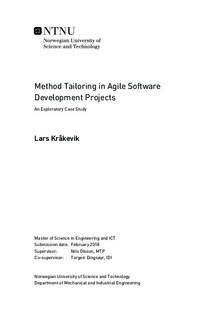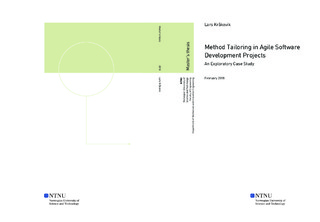| dc.description.abstract | Information technology is becoming increasingly important for organizations and individuals in today's society. Software is a key part of this and can provide competitive edge in a market characterized by constant change. This makes it challenging for those who develop and deliver these products and services. To succeed from idea, via development, testing and execution, an agile project method that enable quick handling of change is essential.
Agile methods have typically recommended delivery of change and new features in increments every two to four weeks. In recent times, a trend is observed towards agile approaches that enable delivery on a continuous basis for additional benefits and competitiveness. However, this requires companies to effectively tailor agile methods and apply mature technology with aim towards this in their projects and deliveries.
Method tailoring is a very relevant issue in conjunction to this, which involves tailoring of project methods to the actual needs and goals of a project context. This thesis was conducted as a case study which main purpose was to explore a project s approach to method tailoring, and how an agile method was tailored in such a manner that deliveries of software changes and new features could be done several times a day. The main findings showed that ongoing tailoring was a necessary activity for continuous improvement of the method in the project. A prominent characteristic of the tailoring approach was that the project suppliers did not confine to a method framework, but were flexible and selected agile practices from multiple methods based on needs and experiences. This entailed a combination of agile practices into a minimal method by omitting unnecessary practices and formalities. The tailored method was based on a flow-based development model rather than an iterative model, and consisted of several agile practices that together enabled the suppliers to deliver continuously, promptly and with the right priorities. | |

